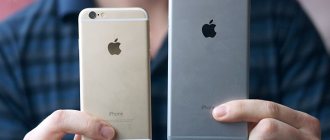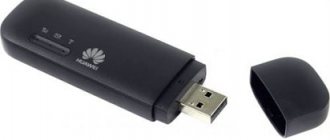Design
To say that the design of the 6 s and 6 s plus is not much different is to say nothing. Widgets have the same:
- design of buildings;
- in our case, even the same color of the Gold case. In addition, it is also available: Silver, Space Gray and Rose Gold.
- The build quality of the cases is obviously the same. Nothing creaks. Everything fits perfectly. There are no and cannot be any complaints in this regard.
But where the iPhone 6s and 6s+ differ is in ergonomics.
iPhone 6s is an almost ideal solution from this point of view. The device fits comfortably in the palm of your hand and allows you to operate it with one hand. The same cannot be said about the 6s Plus, since holding such a shovel is inconvenient. And we wouldn’t risk using it on the go, because the likelihood of dropping this by no means cheap phablet is quite high.
On the other hand, the big trump card of the iPhone 6s Plus is its comfort when watching movies and especially gameplay, because on a large screen your fingers will block you much less from the image than on a small one.
About displays
The iPhone 6s Plus has a 5.5-inch Full HD screen, while the simple 6s has a 4.7-inch matrix with a resolution of 1334 x 750 pixels. The pixel density is 401 and 326 ppi, respectively. In both cases, the displays are clear enough to not complain about life.
Despite the fact that these are devices from the same manufacturer, released at the same time, their screen quality is different.
If there are still no questions about the viewing angles - they are equally good, then in terms of color rendering, the iPhone 6s plus quietly fades into yellow tones, while its smaller brother has more balanced colors. The brightness adjustment range of the 6s is also shifted upward compared to the iPhone 6s Plus, meaning both the upper and lower limits are brighter. Why is that? Unclear. But the fact that this should not happen is clear.
Read also Comparison of Samsung Galaxy Note 8 and Galaxy S8 plus - Which is better to take?
Differences between iPhone 6s and iPhone 6s Plus
The release of the next version of the Apple iPhone is traditionally accompanied by great excitement. They are masters at this. The subject of this article is the iPhone 6s and iPhone 6s Plus. Let's see what's hidden in these markings and what differences they mean for the end user.
Content
Body: design, dimensions and materials Display Camera Performance Battery life and charging time Summary and conclusions
Housing: design, dimensions and materials
Yes, the new iPhones are extremely similar to the old models. This is an area where Apple isn't alone. Samsung smartphones are also extremely similar to each other, in order to distinguish them you need to be quite aware of their model range.
*Lyrical digression. Gone are the days when every new phone was a work of art. What do the first smartphones from Nokia cost? In my opinion, the flight of thought of designers is constrained by the touch screen, which should occupy the entire front part of the smartphone. There’s not much you can do here, not like with a physical keyboard. iPhone 6s and iPhone 6s Plus are noticeably larger and heavier than their predecessors:
- iPhone 6S: 138.3 x 67.1 x 7.1 mm and 143 g.
- iPhone 6: 138.1 x 67 x 6.9 mm and 129 g.
- iPhone 6S Plus: 158.2 x 77.9 x 7.3 mm and 192 g.
- iPhone 6 Plus: 158.1 x 77.8 x 7.1 mm and 172 g.
A much more important improvement is the increase in strength. The deformations to which models 6 and 5 were subject caused great harm to the reputation, even if they were isolated in nature. Apple switched from 6000 series aluminum to the 7000 series, which is much stronger. And it is unlikely that in everyday use you will encounter such force to bend.
In addition, Apple has improved the durability of glass on displays. There were no technical details reported about how they achieved this on glass. As a result, we have an iPhone that is larger, heavier and more durable, but frankly just as slippery when it lies in the hand.
>>> to contents
Display
Despite the latest rumors before the release, the screen resolutions remained unchanged:
- iPhone 6S: 4.7-inch, 1334 x 750 pixels, 326 pixels per inch (PPI)
- iPhone 6S Plus: 5.5 inches, 1920 x 1080 pixels, 401 pixels per inch (PPI)
Is this important for selection? For me no. For comparison, the iPhone 6S has a pixel density corresponding to 4K (Ultra HD) on an 11-inch laptop, and the 6 Plus has a 13-inch laptop. This is certainly less than that of direct competitors. It's just that smartphone makers are living in a time of frenzied resolution battle in which Apple is not participating. Will owners be disappointed with the image quality? By no means in any everyday use: colors, clarity, viewing angles - everything is fine. Both smartphones support 3D Touch. 3D Touch is a radically new method of interacting with a device - which allows you to determine the force of your pressing. You can think of many practical applications for this technology, for example the degree of pressure, like an accelerator in racing games. This is probably why the glass was made stronger so that very strong users would not push through it.











